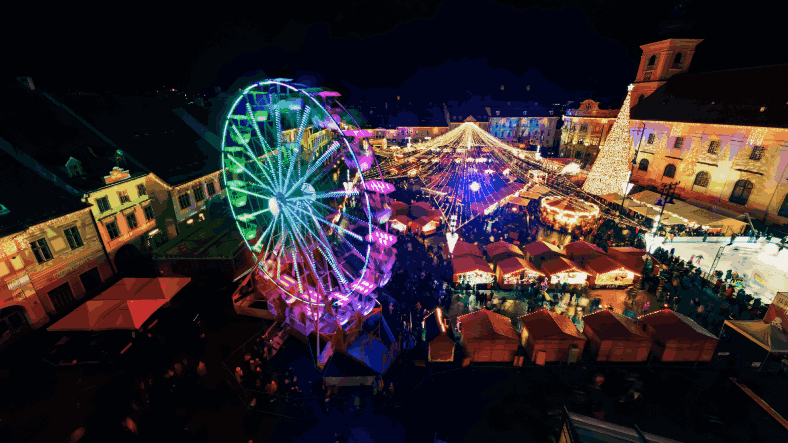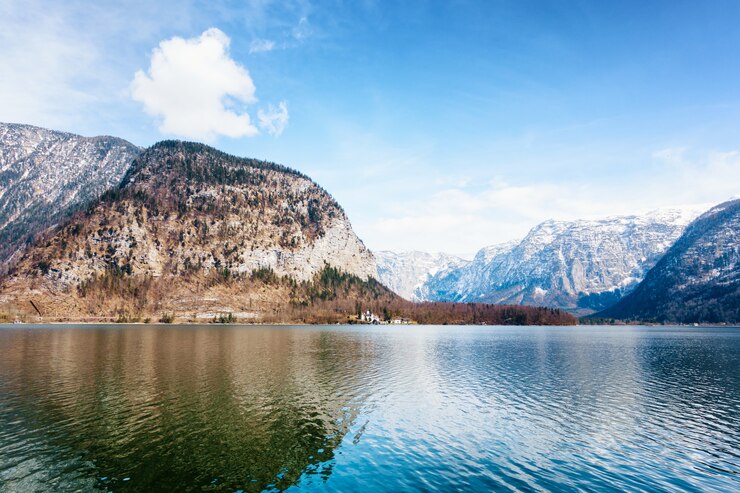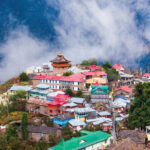Getting feral with the wildlife in Himachal Pradesh is an experience to cherish. Think yourself to be very close to a tiger or catching the glimpse of rare species of bird! Such kind of moments leaves you with lots of questions in mind. To get an answer, the tourists take-up “jungle safaris” and catch the moments live.
Daring can be your cup of tea also by knowing wildlife from a close proximity. This kind of holiday also unfolds hidden secrets of the forest. How exciting it seems, when you think of wearing earthy colored clothes, riding the jeep and looking all over the forest with binoculars.
Himachal Pradesh has some of the well-known wildlife sanctuaries that give you an opportunity to spot tigers or leopards watch different species of birds or even do hunting in some areas. For the purpose of hunting, tourists are required to take prior permission from the forest department and concerned state government. It would be an altogether different experience while looking out for your favorite animal in the lap of lush green valleys.
Simbalbara Sanctuary
Best Time to Visit : Month of October and February
The Simbalbara Sanctuary in Himachal Pradesh is a major wildlife destination in Himachal Pradesh.Simbalbara sanctuary is situated in the Paonta Valley of Sirmaur district in Himachal Pradesh.Simbalbara wildlife Sanctuary gives shelter to animals like the Goral, Sambhar, Chittal, Spotted dear and many more distinct animals. This sanctuary is a good example of the attempts to conserve wildlife by the Himachal Tourism Department. Forested by Sal trees and grassy glades, the sanctuary offers adventurous and picturesque trekking tracks alongside the gurgling stream.
The Simbalbara Sanctuary in Himachal Pradesh is a major wildlife destination in Himachal Pradesh.Simbalbara sanctuary is situated in the Paonta Valley of Sirmaur district in Himachal Pradesh.Simbalbara wildlife Sanctuary gives shelter to animals like the Goral, Sambhar, Chittal, Spotted dear and many more distinct animals. This sanctuary is a good example of the attempts to conserve wildlife by the Himachal Tourism Department. Forested by Sal trees and grassy glades, the sanctuary offers adventurous and picturesque trekking tracks alongside the gurgling stream.
Manali Sanctuary
Best Time to Visit : Between October and February
Manali Sanctuary is located at a distance of about 2 km from Manali main town. It is the catchment area of the Manalsu khad. A path from Manali log huts and Dhungri temple passes through dense Deodar, Kail, Horse chestnut, Walnut and Maple forests to the sanctuary. Musk deer, Monal and Brown bear, Leopard and Snow leopard are some of the sport seen here. Herds of Ibex are also seen roaming in the glacier zone in summers. The sanctuary spreads over about 3,180 hectares. The following area was declared a sanctuary on 26th February 1954, under the Punjab Birds and Wild Animals Protection Act, 1933.
Manali Sanctuary is located at a distance of about 2 km from Manali main town. It is the catchment area of the Manalsu khad. A path from Manali log huts and Dhungri temple passes through dense Deodar, Kail, Horse chestnut, Walnut and Maple forests to the sanctuary. Musk deer, Monal and Brown bear, Leopard and Snow leopard are some of the sport seen here. Herds of Ibex are also seen roaming in the glacier zone in summers. The sanctuary spreads over about 3,180 hectares. The following area was declared a sanctuary on 26th February 1954, under the Punjab Birds and Wild Animals Protection Act, 1933.
Chail Sanctuary
Chail Sanctuary is situated in one of the districts of Shimla, the Chail Sanctuary in Himachal Pradesh is the best retreat for the wildlife buffs and nature lovers. Declared as a wildlife sanctuary in the year 1976, Chail Sanctuary shrouded in Deodar and Oak Forests is the store house of a rich variety of flora and fauna.Explore the sprawling acres of greenery and dense woodlands of Chail Sanctuary still unspoilt by the crowds and pollution. Nestled amidst the green valleys with the snow clad peaks in the background, Chail Sanctuary remains the ideal destination for the wildlife lovers.The Chail Sanctuary has a rich variety of flora and fauna. From the rare orchids to the endangered species you can find them here.
one can see the glimpse of animals and birds like Sambar, Goral, Common Langur, Leopard, Rhesus Macaque, Himalayan Black Bear, Red Deer, Silver-White Oak, Barking Deer, Indian Hare, Yellow Throated Marten, Indian Porcupine, Common Giant and Kashmiri Flying Squirrel and Pheasants. The Chir Pheasants breeding and rehabilitation Programme was introduced here.The major tourist attractions of the Chail Sanctuary are the barking deers and Kalijin. Explore the beautiful forests and for the adventure freaks the trekking options are also available in this wildlife sanctuary of Himachal Pradesh. Trekking from Chail to Gaura and Chail to Jhajja is quite common amongst the trekkers.
one can see the glimpse of animals and birds like Sambar, Goral, Common Langur, Leopard, Rhesus Macaque, Himalayan Black Bear, Red Deer, Silver-White Oak, Barking Deer, Indian Hare, Yellow Throated Marten, Indian Porcupine, Common Giant and Kashmiri Flying Squirrel and Pheasants. The Chir Pheasants breeding and rehabilitation Programme was introduced here.The major tourist attractions of the Chail Sanctuary are the barking deers and Kalijin. Explore the beautiful forests and for the adventure freaks the trekking options are also available in this wildlife sanctuary of Himachal Pradesh. Trekking from Chail to Gaura and Chail to Jhajja is quite common amongst the trekkers.
Daranghati Sanctuary
Best Time to Visit : April-June & October-November
The Daranghati Sanctuary is the home to a number of species like Himalayan Black Bear, Brown Bear, Himalayan Serow, Palm Civet, Barking Deer, Musk Deer, Flying Fox, Goral, Himalayan yellow throated Marten, Indian Hare, Stripped Hyena, Himalayan Ibex, Leopard, Blue Sheep, Common giant flying Squirrel and Himalayan Weasel. For all you adventure freaks and wildlife buffs, explore the unspoilt greenery of Daranghati Sanctuary in Himachal Pradesh amidst the snow clad peaks and Alpine Forests. There are a number of bridle paths and intersected roadways in the forest and you can get the help of forest officials for a smooth journey amidst the dense woodlands.
The Daranghati Sanctuary is the home to a number of species like Himalayan Black Bear, Brown Bear, Himalayan Serow, Palm Civet, Barking Deer, Musk Deer, Flying Fox, Goral, Himalayan yellow throated Marten, Indian Hare, Stripped Hyena, Himalayan Ibex, Leopard, Blue Sheep, Common giant flying Squirrel and Himalayan Weasel. For all you adventure freaks and wildlife buffs, explore the unspoilt greenery of Daranghati Sanctuary in Himachal Pradesh amidst the snow clad peaks and Alpine Forests. There are a number of bridle paths and intersected roadways in the forest and you can get the help of forest officials for a smooth journey amidst the dense woodlands.
The Great Himalayan National Park, Himachal
Best Time to Visit : April to June and September to November
The Himalayas offer some of the most spectacular landscpaes in the world. Among the high altitude wildlife reserves of the Himalayas comes the Great Himalayan National Park, located in the beautiful district of Kullu. Himalayan National Park 765-sq-kms area has temperate forests – some of the virgin coniferous forests of the state. Vast areas of alpine pastures and glaciers cap this park. The park area is the largest protected area in the state of Himachal Pardesh.
The Park consists of the upper catchment areas of the Tirthan, Sainj, Parvati and Jiwa Nala, flowing East to West and mingling into Beas river. The bewitching scenic beauty of the Park is a complement to its biological richness. Among the animals found in this part of the Western Himalayas are Musk Deer, Ghoral, Thar, Bharal, Serow, Brown Bear, Leopard and Snow Leopard. Bird life includes a variety of colourful Pheasants- Monal, Khalij, Cheer and Tragopan.
The Himalayas offer some of the most spectacular landscpaes in the world. Among the high altitude wildlife reserves of the Himalayas comes the Great Himalayan National Park, located in the beautiful district of Kullu. Himalayan National Park 765-sq-kms area has temperate forests – some of the virgin coniferous forests of the state. Vast areas of alpine pastures and glaciers cap this park. The park area is the largest protected area in the state of Himachal Pardesh.
The Park consists of the upper catchment areas of the Tirthan, Sainj, Parvati and Jiwa Nala, flowing East to West and mingling into Beas river. The bewitching scenic beauty of the Park is a complement to its biological richness. Among the animals found in this part of the Western Himalayas are Musk Deer, Ghoral, Thar, Bharal, Serow, Brown Bear, Leopard and Snow Leopard. Bird life includes a variety of colourful Pheasants- Monal, Khalij, Cheer and Tragopan.
Renuka Sanctuary
Best Time to Visit :May to October
The Renuka Sanctuary named after the town of Manali, is a major tourist junction for nature lovers. The Renuka sanctuary is located in Sirmour district in Himachal Pradesh. The total area of the sanctuary is about 402.80 hectares and is comprised of the Renuka Reserve Forest and has been declared as Abhayaranya. Also, an area of roughly about 300 hectare outside the sanctuary has been declared as a buffer belt. The vegetation inside the sanctuary comprises mainlyof Anogeissus, Lucinea, Terminalia, Khair, Shisham, Carrie, Cordia and a number of climbers in moist depressions. The fauna includes Leopard, Samber, Spotted Deer, Barking deer, Jackal, Hare, Jungle cat, Plam Civet, Porcupine, Blue jay, Black Partridge, Drongos, Hill Crow, Scarlet Minivet, Bulbul, Common Coots, Greenm Pigeons. The Renukaji Zoo is the oldest zoo in Himachal Pradesh, and was initially started during 1957 with rescued, stray and deserted wild animals from the forests. The first animal brought here was a male spotted deer named Moti. To accommodate the increasing number of animals, the concept of an open park was conceived and the park was established in 1983. At present the Lion Safari, zoo, Aviary and Sanctuary is under control of the administrative control of Shimla Wildlife Division.
The Renuka Sanctuary named after the town of Manali, is a major tourist junction for nature lovers. The Renuka sanctuary is located in Sirmour district in Himachal Pradesh. The total area of the sanctuary is about 402.80 hectares and is comprised of the Renuka Reserve Forest and has been declared as Abhayaranya. Also, an area of roughly about 300 hectare outside the sanctuary has been declared as a buffer belt. The vegetation inside the sanctuary comprises mainlyof Anogeissus, Lucinea, Terminalia, Khair, Shisham, Carrie, Cordia and a number of climbers in moist depressions. The fauna includes Leopard, Samber, Spotted Deer, Barking deer, Jackal, Hare, Jungle cat, Plam Civet, Porcupine, Blue jay, Black Partridge, Drongos, Hill Crow, Scarlet Minivet, Bulbul, Common Coots, Greenm Pigeons. The Renukaji Zoo is the oldest zoo in Himachal Pradesh, and was initially started during 1957 with rescued, stray and deserted wild animals from the forests. The first animal brought here was a male spotted deer named Moti. To accommodate the increasing number of animals, the concept of an open park was conceived and the park was established in 1983. At present the Lion Safari, zoo, Aviary and Sanctuary is under control of the administrative control of Shimla Wildlife Division.
Majathal Sanctuary
Best Time to Visit : During the Winter Months
Majathal Sanctuary in Himachal Pradesh is one of the most ideal destinations for the wildlife buffs. From trekkers to leisure tourists Majathal Sanctuary allures tourists from all over. Located atop the rugged Himalayan terrains in Himachal Pradesh, this is the home of the rare species like Goral and Cheer Pheasants. One can get a glimpse of the Goral and Cheer Pheasants in their natural habitat. Far away in the rugged Himalayas, this sanctuary provides the wildlife lovers with a serene retreat. There are arrangements for tent accommodation for the tourists.
The Majathal Sanctuary has the highest concentration of Gorals and you can see them in their natural habitat. A kind of mountain goat, the Gorals have curved horns. They are only seen in hilly areas and Majathal Sanctuary is where you can get to see Gorals in their natural habitat. There is also an abundance of Cheer Pheasants in Majathal Wildlife Sanctuary in Himachal Pradesh. They are considered to be one of the endangered species.
Majathal Sanctuary in Himachal Pradesh is one of the most ideal destinations for the wildlife buffs. From trekkers to leisure tourists Majathal Sanctuary allures tourists from all over. Located atop the rugged Himalayan terrains in Himachal Pradesh, this is the home of the rare species like Goral and Cheer Pheasants. One can get a glimpse of the Goral and Cheer Pheasants in their natural habitat. Far away in the rugged Himalayas, this sanctuary provides the wildlife lovers with a serene retreat. There are arrangements for tent accommodation for the tourists.
The Majathal Sanctuary has the highest concentration of Gorals and you can see them in their natural habitat. A kind of mountain goat, the Gorals have curved horns. They are only seen in hilly areas and Majathal Sanctuary is where you can get to see Gorals in their natural habitat. There is also an abundance of Cheer Pheasants in Majathal Wildlife Sanctuary in Himachal Pradesh. They are considered to be one of the endangered species.
Churdhar Sanctuary
Best Time to Visit :Between May to October
Churdhar Sanctuary nestled in the beautiful Solan Valley is a dream destination for wildlife buffs. Nestled amidst the snowy peaks and green valleys, the dense Alpine forests of Churdhar Sanctuary are quite beautiful. Situated at a height of 3647 m covering an area of 5616 hectares, the Churdhar Sanctuary gets its name from the Churu Peak of the Himalayas. Declared as a sanctuary, the Churdhar is one of the most recent sanctuaries in India. Walk amidst the dense woodlands and explore the rich variety of flora and fauna in the Churdhar Sanctuary.
In Churdhar Sanctuary you can get a glimpse of the colorful Monals, Barking Deer, Himalayan Black Bear, Musk Deer, Leopards, Common Langur and Leopards. For all you adventure freaks out there, Churdhar Sanctuary offers you trekking options even. So take a tour amidst the forests of Churdhar Sanctuary as you explore the Himalayan Wildlife. One of the newest sanctuaries, Churdhar Sanctuary in Himachal Pradesh is still an unexplored and a lesser known destination. So if you are planning a vacation to a unique destination nestled amidst the hills then this is the perfect place.
Churdhar Sanctuary nestled in the beautiful Solan Valley is a dream destination for wildlife buffs. Nestled amidst the snowy peaks and green valleys, the dense Alpine forests of Churdhar Sanctuary are quite beautiful. Situated at a height of 3647 m covering an area of 5616 hectares, the Churdhar Sanctuary gets its name from the Churu Peak of the Himalayas. Declared as a sanctuary, the Churdhar is one of the most recent sanctuaries in India. Walk amidst the dense woodlands and explore the rich variety of flora and fauna in the Churdhar Sanctuary.
In Churdhar Sanctuary you can get a glimpse of the colorful Monals, Barking Deer, Himalayan Black Bear, Musk Deer, Leopards, Common Langur and Leopards. For all you adventure freaks out there, Churdhar Sanctuary offers you trekking options even. So take a tour amidst the forests of Churdhar Sanctuary as you explore the Himalayan Wildlife. One of the newest sanctuaries, Churdhar Sanctuary in Himachal Pradesh is still an unexplored and a lesser known destination. So if you are planning a vacation to a unique destination nestled amidst the hills then this is the perfect place.
Maharana Pratap Sagar Sanctuary, Himachal
Best Time to Visit : November to March
Maharana Pratap Sagar Sanctuary, located in the beautiful Himalayas is one of the lake sanctuaries of Himachal Pradesh. Every year, thousands of avian species from far off Siberia and other countries make the Maharana Pratap Sagar Sanctuary their nesting grounds.Nestled amidst the dense Alpine Forests with snow clad peaks on the backdrop. Explore the sprawling actress of greenery and also get a glimpse of the migratory ducks from Siberian region. Especially in the swamp area between Shahnahar Barrage and Pongdam the birds flock from all over. The sanctuary is fascinating as it is set amidst green valleys and the snowy Dhauladhar Range of the Himalayas in the background.
The rich variety of Himalayan flora and fauna will attract you to the Ransar Island amidst the Lake in Maharana Pratap Sagar Sanctuary. This island is the home of the Black Buck and Cheetals and you can also get to see Surkhab, Cranes, Pintails and other variety of water birds in this area.Maharana Pratap Sagar Sanctuary which grew around a lake is a reservoir. During 1983 this was declared a wildlife sanctuary. There is a rich variety of avian species in this park which amounts to 220 species in total.However it is also the home of barking deers, wild boars and leopards.
Maharana Pratap Sagar Sanctuary, located in the beautiful Himalayas is one of the lake sanctuaries of Himachal Pradesh. Every year, thousands of avian species from far off Siberia and other countries make the Maharana Pratap Sagar Sanctuary their nesting grounds.Nestled amidst the dense Alpine Forests with snow clad peaks on the backdrop. Explore the sprawling actress of greenery and also get a glimpse of the migratory ducks from Siberian region. Especially in the swamp area between Shahnahar Barrage and Pongdam the birds flock from all over. The sanctuary is fascinating as it is set amidst green valleys and the snowy Dhauladhar Range of the Himalayas in the background.
The rich variety of Himalayan flora and fauna will attract you to the Ransar Island amidst the Lake in Maharana Pratap Sagar Sanctuary. This island is the home of the Black Buck and Cheetals and you can also get to see Surkhab, Cranes, Pintails and other variety of water birds in this area.Maharana Pratap Sagar Sanctuary which grew around a lake is a reservoir. During 1983 this was declared a wildlife sanctuary. There is a rich variety of avian species in this park which amounts to 220 species in total.However it is also the home of barking deers, wild boars and leopards.

















